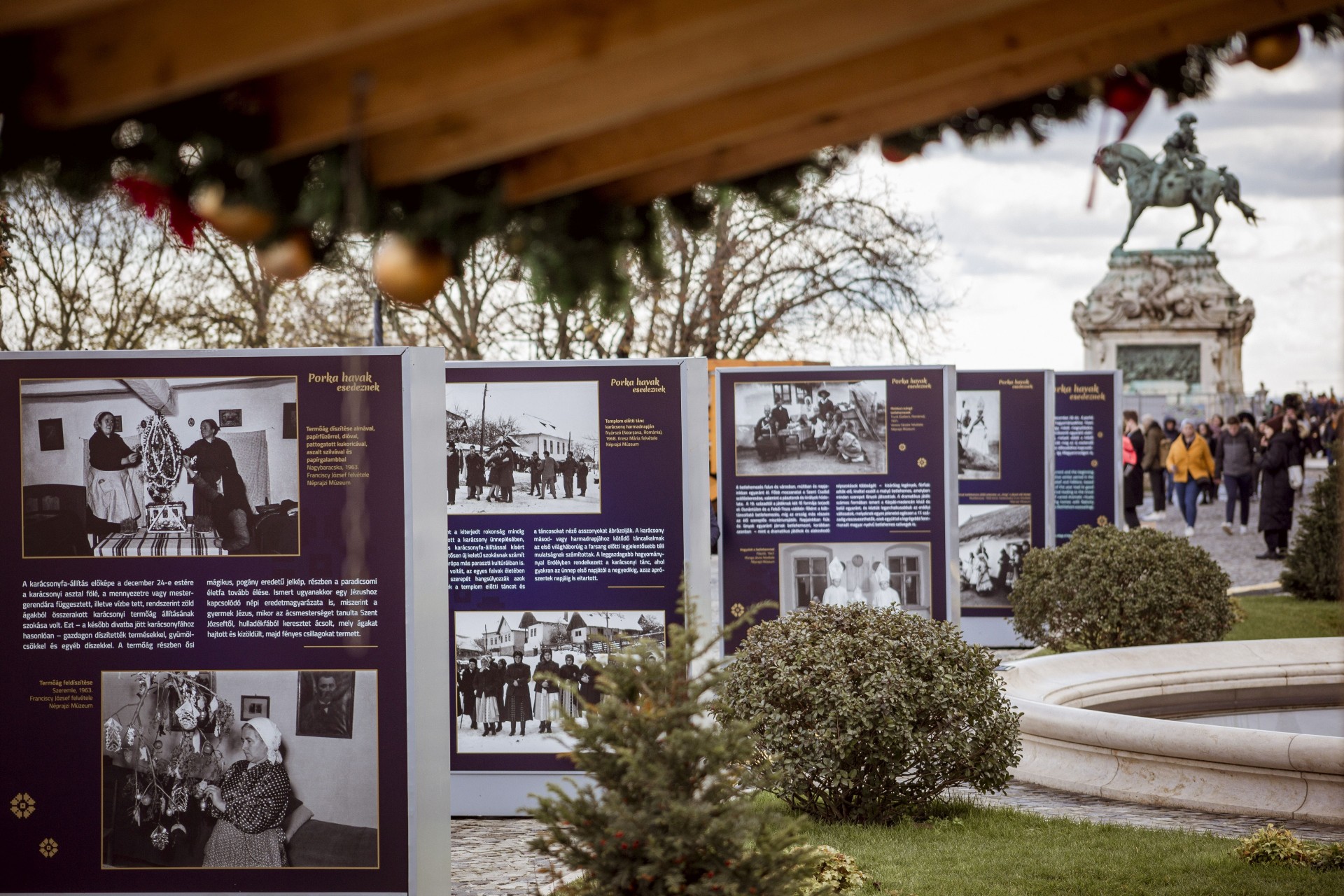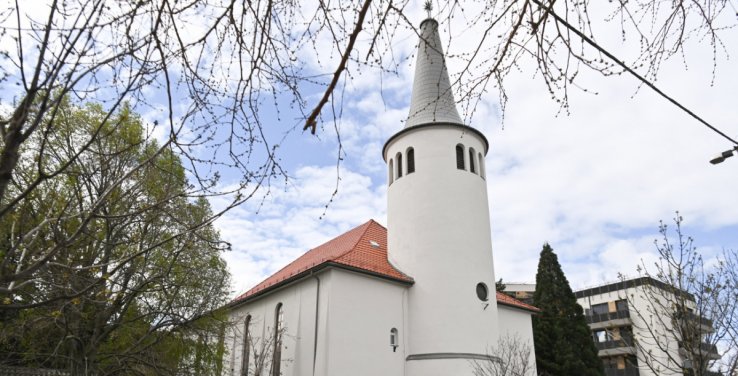An open-air photo exhibition on festive folk traditions opened in Buda Castle, MTI reports. The "Porka havak esedeznek" exhibition was realised together with the Museum of Ethnography - emphasised Krisztina Sikota, Deputy General Director of Tourism, Culture and Communication of the Castle Headquarters at the opening of the exhibition on Tuesday.
The oldest of the photos was taken in 1899, the exhibition promises time travel to the age of grand and great-grandparents, which many people only know from documentaries, archive photos or books. The exhibition reveals, among other things, what the "csobánolás (Nativity play), kolindálás (singing), turkajárás (wearing goat masks), subrikálás (a type of decorative weaving) or Mikulás-járás (the visit of Santa Claus)" was, emphasised Krisztina Sikota.

The exhibition "Porka havak esedeznek" can be seen on the Terrace of the Fishing Children (Photo: Castle Headquarters)

The oldest photo was taken in 1899, and it is about the "regölés" (singing) (Photo: Castle Headquarters)
According to the Deputy General Manager, it is worth preserving and passing on these ancient traditions to future generations. According to folklore, the purpose of the folk customs related to the holiday period is to lay the foundation for success in the coming year, she pointed out.
Krisztina Sikota reminded that thanks to the National Hauszmann Program, the completely renovated Terrace of the Fishing Children and the fountain were handed over last year, and the Habsburg Gate, its staircase and the turul statue rising towards the city were also reborn. As she said, the number of visitors to the newly reborn Castle District is increasing every year: St. Stephen's Hall already attracted more than a hundred thousand visitors last year.

The Terrace of the Fishing Children and the fountain were renovated last year (Photo: pestbuda.hu)
Krisztina Sikota emphasised that the Castle Headquarters could have a successful year behind them, several constructions in the Castle have reached a significant stage: the renewed building of the former headquarters of the Red Cross Society reached its highest point on Dísz Square, but the dome was also returned to the former headquarters of the Hungarian Defence Forces, where the observation deck of the new visitor centre of the Buda Castle District will be there. The Turkish Garden in the southwestern part of the Csikós Courtyard was handed over in the summer, but the reconstruction of Archduke Joseph's Palace and the restoration of the northern wing of the Buda Castle are progressing at a good pace, she said.
"At that time, 150 years ago, the collection of the Museum of Ethnography was founded with the intention of collecting the completeness, the recognisable civilisational memories of Hungarian folk culture and the cultures of the world, and passing it on to many generations," emphasised Lajos Kemecsi, the Director General of the Museum of Ethnography. highlighted: the Museum of Ethnography's 150-year-old photo collection now has more than 320,000 images. As he said, the pictorial material selected from the winter folk customs also offers a taste of the winter folk traditions of several nationalities that once lived together with the Hungarians in the Carpathian Basin.

The Director General of the Museum of Ethnography opens the exhibition (Photo: Castle Headquarters)
According to the Director General, the exhibition represents a vanished world that exists in our memories, as well as in the folk customs that, having partially lost their original function, are reborn again and again, organised into new social occasions. He emphasised that habits that strengthen togetherness are still born today. He also talked about the fact that during the Advent period, the Museum of Ethnography is waiting for visitors with various programs both on-site and online.


Archive photos show the traditions associated with the holiday on the Southern Panorama Terrace of the Castle Garden Bazaar (Photo: Castle Headquarters)
After the opening, Hanga Gebauer, the curator of the exhibition, presented the collection of outdoor images and the customs depicted in the photos. The curator said that on the Terrace of the Fishing Children, customs closely related to the Christmas holidays are displayed, and on the Southern Panorama Terrace of the Castle Garden Bazaar, traditions related to festive anticipation, Christmas and New Year are displayed.

The exhibition will be on display until 6 January (Photo: Castle Headquarters)
The pictures taken between 1899 and 1968 show the diversity of folk customs through the traditions of several ethnic groups and religious denominations. Among other things, it will be revealed how the Moldavian Csángós, Slovaks, Romanians, Matyós, Roma, Swabians and the Bunjevci celebrated and prepared for the new year. The curator also talked about the fact that in both places visitors can also enjoy selected audio material from the museum's archive: original Christmas carols, Saint Lucy's Day singing and rejoicing.
The exhibition will be on display until 6 January.
Source: MTI
Cover photo: An open-air photo exhibition on festive folk traditions opened in Buda Castle (Photo: Castle Headquarters)






































Hozzászólások
Log in or register to comment!
Login Registration